Characteristics of zinc
Zinc is among the most sustainable metals used in construction. There are many reasons to choose zinc for building envelope.
The history of VMZINC is that of a tradition that goes back more than 180 years. A history that spans the centuries and reflects the image of a noble, durable and robust metal with exceptional durability and great malleability.
At VMZINC, we are totally committed to your success in applying versatile and durable solutions for imaginative building projects from individual homes to commercial complexes, public buildings and private projects all over the world.
All what you need to know about zinc before let your creativity work.
Zinc, a top performing alloy
Composition of alloy
VMZINC rolled zinc is alloyed with copper and titanium to produce a material with optimum mechanical and physical characteristics for building applications, particularly with regard to mechanical resistance and creep resistance.
It is composed of very high quality zinc Z1 (99,995% pure zinc), as defined by the EN 1179 standard, to which titanium and copper are added in order to obtain rolled zinc according to the European standard EN 988. Copper increases the mechanical resistance of the alloy, making it harder and stronger. This standard imposes very stringent specifications for the composition of rolled zinc and its physical, mechanical and dimensional characteristics, which make it an international reference. Titanium increases creep resistance permitting greater thermal expansion and contraction, of the material without causing metal fatigue.
EN988 norm
The European Standard EN 988 has been applied since 1997 in 18 European countries. This standard imposes very stringent specifications for the composition of rolled zinc and its physical, mechanical and dimensional characteristics, which make it an international reference.
Physical properties of titanium zinc by VMZINC | |
|---|---|
Density | 7.2 kg/dm³ |
Thermal expansion coefficient (parallel to the rolling direction) | 0.022 mm/m/°C |
Melting point | 420°C |
Recrystallization point | 300°C |
Heat conductivity | 110 W/(m.K) |
Electrical conductivity | 17 MS/m |
Danger of sparking | Non-sparking |
Magnetic properties | Diamagnetic |
Whilst the VMZINC brand complies with all the specifications of the EN 988 standard, we have gone beyond the requirements of this standard to create the PREMIUMZINC quality system. It offers an even higher level of quality than EN 988 certification.
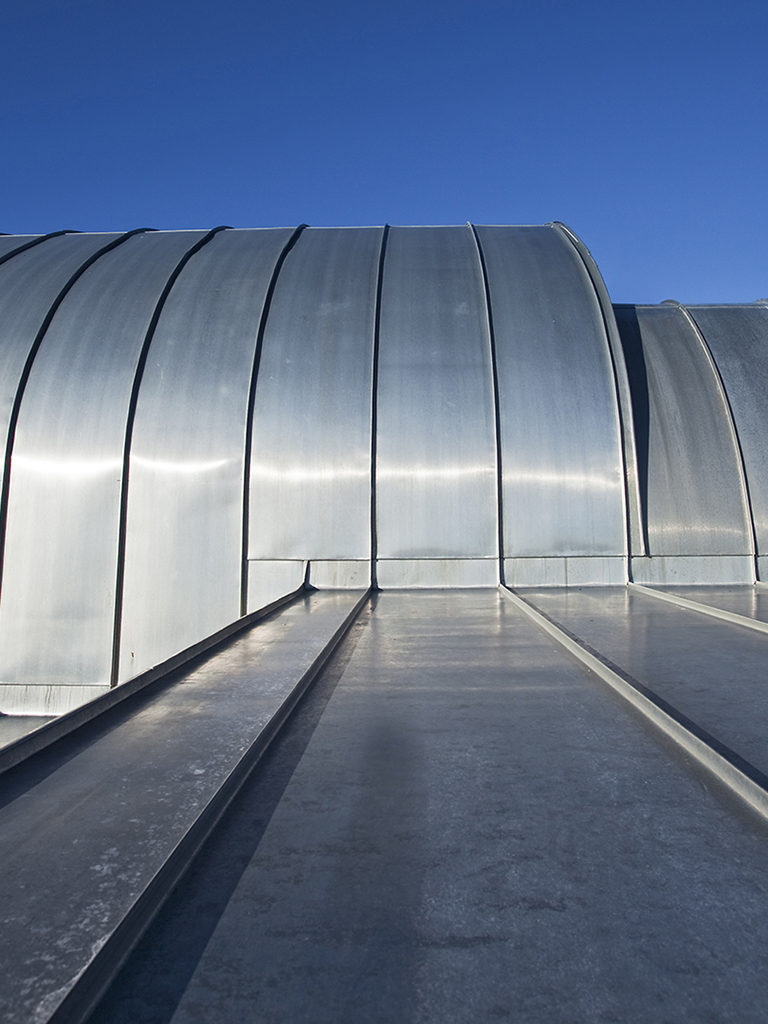
Malleability
Architects have unlimited creativity which can be perfectly expressed with VMZINC. The material can therefore adopt any shape and adapted to all types of buildings. It can be bent to fit curves with low radiuses and form complex shapes which are difficult to realize with other materials.
VMZINC provides the freedom to craft architectural masterpieces which are difficult to create with other construction materials. It is very malleable and can therefore meet virtually every architectural demand and provide solutions that less flexible materials cannot. Architects appreciate this versatility which allows them great freedom of expression when designing a building.
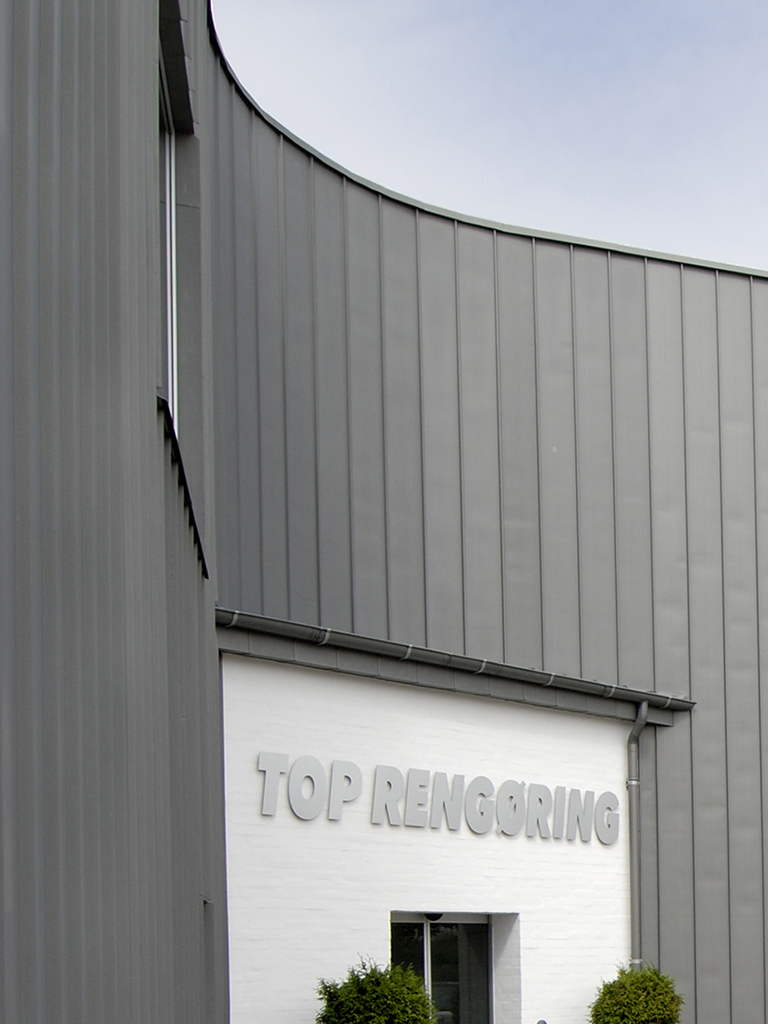
Adaptability
Zinc resolves a large number of design issues helping to create an almost infinite variety of shapes: straight, curved, convex or concave with more or less pronounced assemblies with no visible fasteners. It allows a varied range of construction layouts and the management of complex details that are impossible to realize with other materials. It adapts to local professional particularities, to regulation or comfort requirements specific to each building.
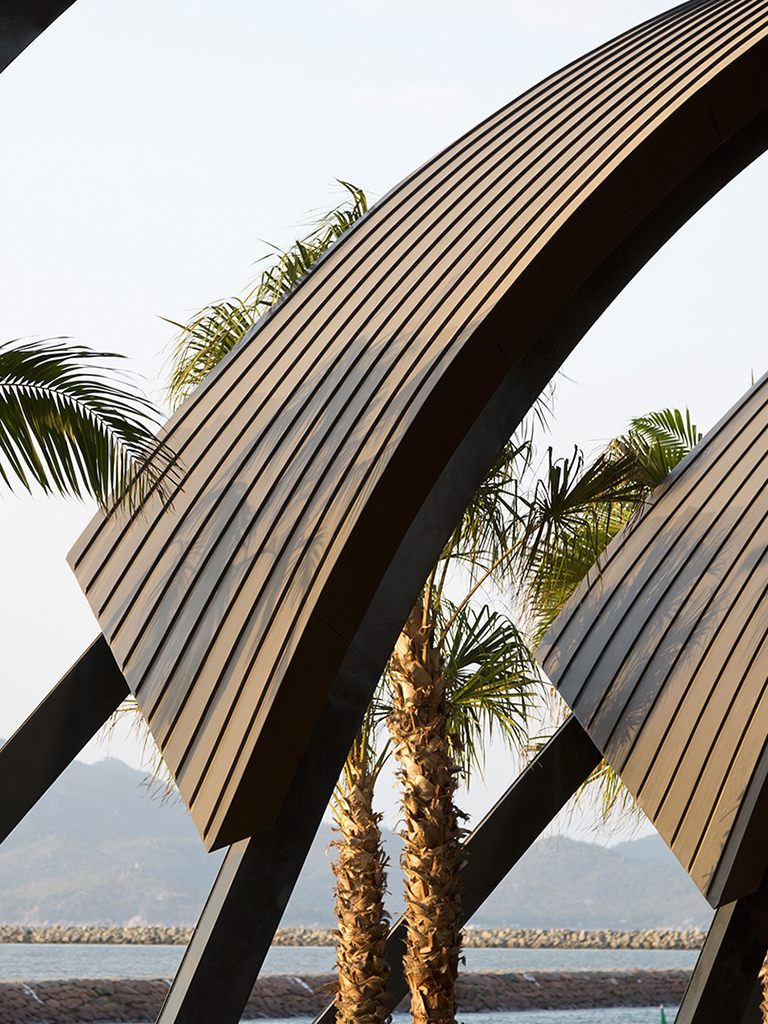
Zinc and patina for a long life span
The light grey patina takes between six months and two years to form, depending on the climate, the exposure of the site and the composition of the atmosphere. It protects itself against outdoor corrosion by developing a patina that gives it an exceptional long life span. With an average corrosion rate of 1µm/year, even very thin (0.7 mm) rolled zinc can achieve 70 to 100 years life depending on the environment (60 years in an aggressive environment up to more than 100 years in a milder environment). Zinc continues to develop protective layer throughout its life and will self-repair imperfections and scratches.
The patina is made up of two parts, first a very compact layer consisting of very dense basic zinc carbonate crystals is formed and adheres to the zinc. This first layer protects the zinc completely and slows down its interaction with the oxygen in the air. A second, less uniform layer, made up of zinc oxide or hydroxide, which is less adhesive and more porous, is also formed. Although it plays a less important role, it is still useful as it neutralises the effect of rain and other external factors on the zinc.
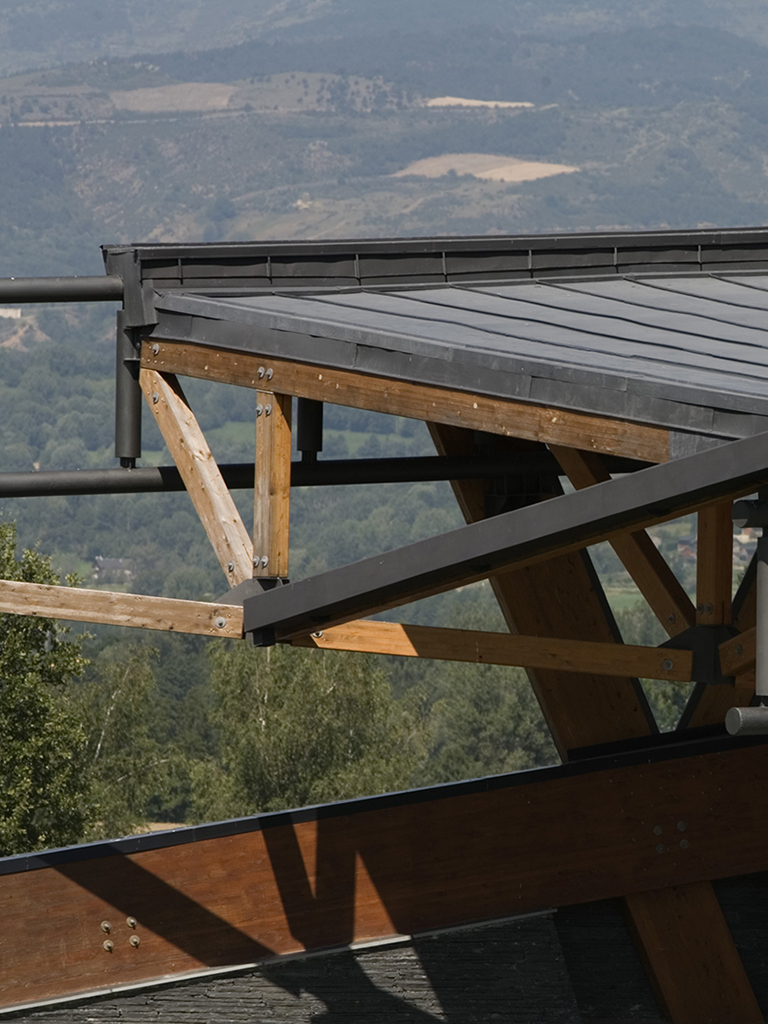
Low maintenance
In addition to its long lifespan, zinc is a low maintenance material. It does not have a coating or varnish that wears out over time needing to be reapplied. In fact, zinc continues to develop a protective layer (patina) throughout its life and will self-repair imperfections or scratches. This noble material improves over the years thanks to its natural oxidation, giving it excellent durability and limited maintenance.
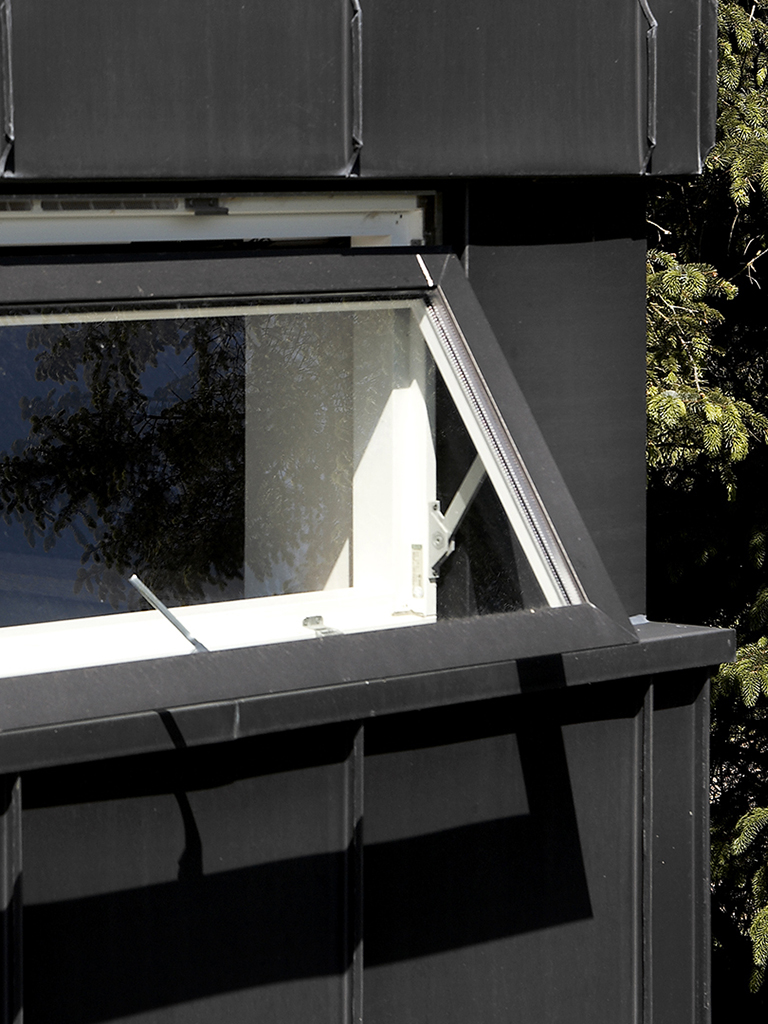
Acoustics properties
The traditional VMZINC systems provide highly efficient soundproofing against airborne noise (road traffic, airplanes, etc.). Their acoustic performance is further enhanced by the increased thickness of thermal insulation due to stricter regulations for the thermal insulation of building envelopes. Zinc also has a better acoustic performance with impact noises such as rain than the more rigid alloys (aluminium, stainless steel, etc.).
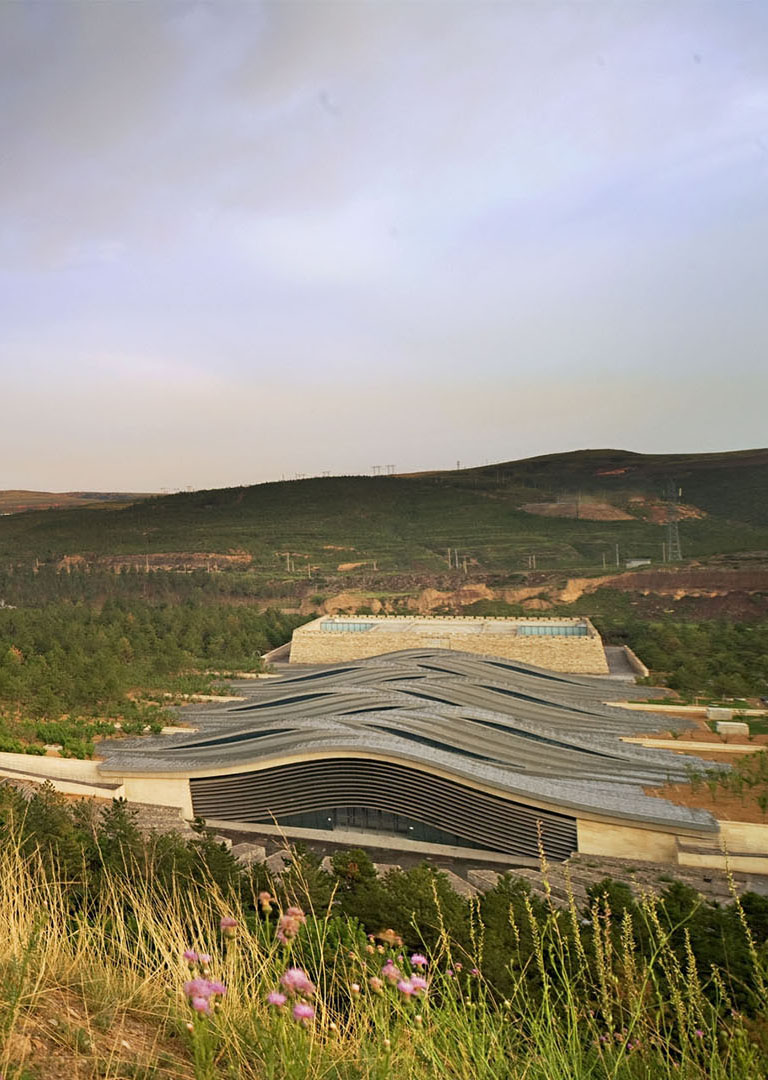
Zinc, natural and recyclable
Zinc is a non-toxic, durable, recyclable and plentiful material. As an essential trace element, zinc is also vital to biological equilibrium and growth. Zinc used in the building industry is 100% recyclable and can be recycled indefinitely, putting it far ahead of many other materials which are just taking their first steps in recycling.
In Europe, more than 95 % of old rolled zinc is recycled. 100% of rolled or shaped zinc products at the end of their life cycle are recyclable and 95% are actually recyclable.
The success of rolled zinc recycling is due to a very well organized recycling market. The main users for old rolled zinc products are secondary zinc refiners, brass and oxide producers.
Zinc is an environmentally friendly metal with a favorable overall energy balance. Less energy is required to produce zinc than the other principal metals in the building industry. The energy balance is even more favorable in recycled zinc.
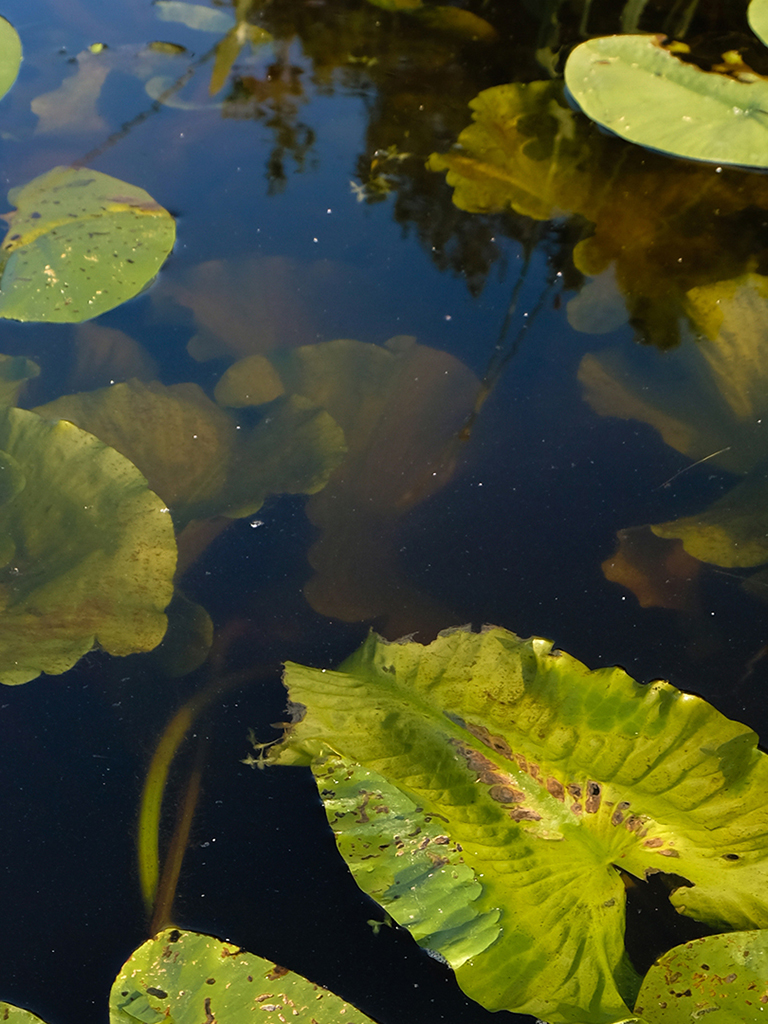
Zinc and living organisms
Zinc is an essential element for all living organisms. Zinc is necessary and indispensable for human, animal and plant life.
There is an optimal zinc concentration range for each living organism. Within this concentration range, living organisms can regulate their internal concentration in order to meet the requirements of their metabolism.
If these optimal conditions are not met and there is a deficit, zinc deficiency can result, likewise, in the event of excess, ecotoxicological problems arise.
Human beings are not usually exposed to an excess of zinc but they can experience zinc deficiencies.
On the other hand, ecosystems are rarely subjected to a lack of zinc but can be subjected to an excess of zinc.

Zinc and human beings
Zinc is an important metal element for humankind as it ranks 3rd, after magnesium and iron.
Zinc plays an essential role in health. It is essential for growth, brain development, protecting the skin, the proper functioning of the immune system, digestion, reproduction, taste, smell and many other natural processes.
The human body is unable to synthesise the zinc it needs. It therefore draws zinc from its food. The World Health Organisation (WHO) recommends a daily zinc intake of 10 mg/day for children, 12 mg/day for women and 15 mg/day for men. Certain population groups have a higher zinc requirement and are therefore more at risk of zinc deficiency: children and adolescents, pregnant women, elderly people, etc.
The symptoms related to the risk of deficiency are: a reduction in the senses of taste and smell, skin problems, mental lethargy and a reduction in fertility.
Variety in a person's diet depends primarily on their culture and standard of living. Since the amount of zinc varies according to the type of food, on a global scale many adults and children have a diet that is too low in zinc. In developing countries, zinc deficiency ranks 5th among the leading 10 risk factors for human health; the World Health Organisation (WHO) attributes 800,000 deaths worldwide each year to zinc deficiency and over 28 million healthy life years lost (¹).
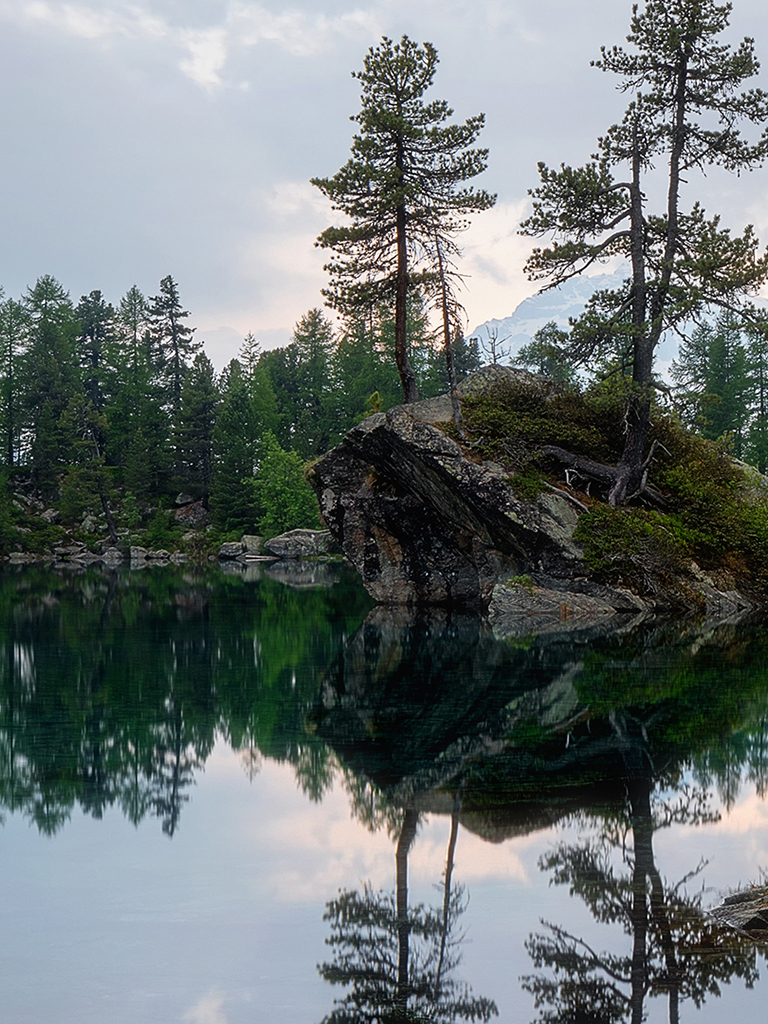
Zinc and ecotoxicology
Zinc is naturally present in the environment: rocks, soil, water and air have always naturally contained variable concentrations of it. During the course of their evolution, all living organisms have used the zinc available in their environment for specific functions of their metabolism. So, zinc is an essential element, which is necessary and indispensable for all living organisms in all ecosystems.
Living organisms are adapted to the natural concentration of zinc in their ecosystem. Furthermore, they have developed mechanisms to maintain optimum living conditions when this concentration level varies from the natural norm. But if the zinc concentration radically changes, living conditions are no longer optimum and the functioning of the ecosystem can be affected.
For this reason ecotoxicological studies can be conducted to assess the risk to the environment of an excess of zinc.
In these ecotoxicological studies, only the concentration of dissolved zinc should be taken into account because the insoluble part has no effect. The concentration of dissolved zinc is affected by properties of its environment such as pH, water hardness, dissolved organic carbon and temperature. So any study of the environmental impact of zinc must take into account the specific features of the ecosystem concerned and the concentration of dissolved zinc, not the total zinc concentration.
Ecotoxicological studies have shown that zinc concentrations in European ecosystems, originating either from human activities (such as atmospheric corrosion of rolled zinc and galvanised steel, wear and tear of vehicle tyres, fertilisers and animal feed, etc) or natural emissions (mainly from the earth's volcanic activity), remain within the limits of optimal living conditions. A good example of this is the current levels of zinc in the Rhine (extreme values from 3 to 25 µg/L) which are within the optimal range for zinc (3).